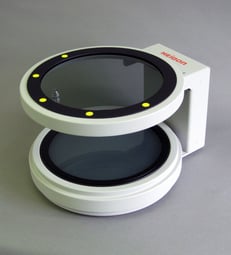 We rely on plastics and polymers for just about everything in our lives, from cars to toothbrushes, heart stents to eyeglasses. Even parts of the most technologically advanced airplanes like the Boeing Dreamliner are made from plastics.
We rely on plastics and polymers for just about everything in our lives, from cars to toothbrushes, heart stents to eyeglasses. Even parts of the most technologically advanced airplanes like the Boeing Dreamliner are made from plastics.
However, these products are only reliable when they are made from plastics and polymers that are made to withstand standard wear and tear. Polymers that are not strong enough to weather strain and stress shouldn’t be used to create the products that make our lives easier, safer or more convenient.
Let’s explore polymer stress and strain, what it is and how to identify it.
How Stress and Strain Affect Polymers Differently
Plastics and polymers behave differently depending on composition, strain rate, molecular weight, crosslink density and temperatures, which can affect stress and strain. Generally, plastics range on a spectrum from brittle to ductile.
What should you know about the brittle and ductile qualities of plastics?
- Brittle: Brittle plastics and polymers break with high stress and low strain. Brittle plastics don’t undergo plastic deformation, or permanent change in shape, before breaking. In other words? There’s little to no “yield point.” They snap rather than slowly bending and breaking. Brittle materials fail faster when exposed to fatigue loading.
- Ductile: Ductile plastics show substantial plastic deformation under external loading. They show lots of plastic deformation before fracture. These ductile plastics go through a lot of bending and deformation before eventually breaking. Ductile materials tend to show a longer life compared to brittle polymers when exposed to fatigue loading.
Because of the amount of stress and strain ductile materials can handle, brittle polymers are especially susceptible to to breakage, while ductile polymers aren’t always as strong as they need to be.
The Problem With Polymer Stress and Strain
The brittle-ductile behavior of polymers and other plastics can be hard to predict. This is because it’s dependent on many internal and external factors. Internal factors that can impact the brittle-ductile behavior have a lot to do with the way that polymers crystallize and form a structure, including the stiffness of the molecular chain of each individual polymer blend.
Externally, the brittle and ductile levels of a polymer can be affected by temperature, speed, rate of deformation, stress state, number, size, and shape of defects like notches or cracks.
So what exactly can happen when these internal and external factors affect a polymer? Brittle polymers can fracture because of the formation of voids during deformation. Essentially, they undergo too much stress and strain, which causes the polymer to snap.
What are some reasons that polymers fail?
- Mechanical failures, including ductile and brittle fractures, fatigue from slow crack growth and cyclic loading, and rapid fracture from impact.
- Thermal failures, including depolymerization and degradation, thermal fatigue, fire, and slow combustion
- Chemical failures, including oxidation, stress corrosion cracking and other chemical interactions
- Optical failures including ultraviolet (UV) degradation and fading
- Electrical failures including arcing, tracking and electrostatic buildup
The biggest, most preventable reasons that polymers fail are mechanical in origin. Most plastics and polymers bear some kind of weight, even if it’s just the weight of the product itself. Even other failures like chemical or optical damage will weaken the product and eventually lead to mechanical failure over time.
What does this mean when creating new polymers or new plastic products? It’s crucial to find potential strains during development before they become a larger issue—such as while the product is in production.
Detecting Polymer Strain
Creating a polymer that is strong, durable and resistant to stress and strain is no easy feat. Single molecules are combined in a very specific way—like a house of cards—to create large macromolecules. Without an instrument to help identify strain or stress, a polymer might seem to be without flaw until it fails.
It is possible to track and identify these stresses and strains in polymers through the use of a Model H25 Polymer Stress Monitor. This stress monitor uses color spectra to pinpoint potential stresses using a large, polarized lens and a fluorescent light source. With this instrument, polymer engineers can find faults, fractures and other discontinuities instantly. When a part, product or polymer sample is placed under the polarized lens, these issues are easy to spot. By identifying these stresses, engineers can adjust the formula or the polymerization process for a more durable finished product.
Destructive testing is incredibly time-consuming, and while it can identify potential failures, there’s no quantifiable data, only results. There’s no sophistication or transparency to this method. Only the Model H25 Polymer Stress Monitor offers clear, visible results in no time.
At Kett, we have the tools, including the H25 Polymer Stress Monitor, you need to protect polymers throughout their creation. When creating new polymers in the lab, we also have dependable, consistent laboratory mixing systems for a well-blended polymer.
Whatever instruments you need to engineer new polymers, Kett is here to help. Want to learn more about what we can do to make your process a simpler one? Contact us today!
